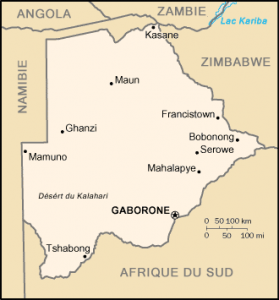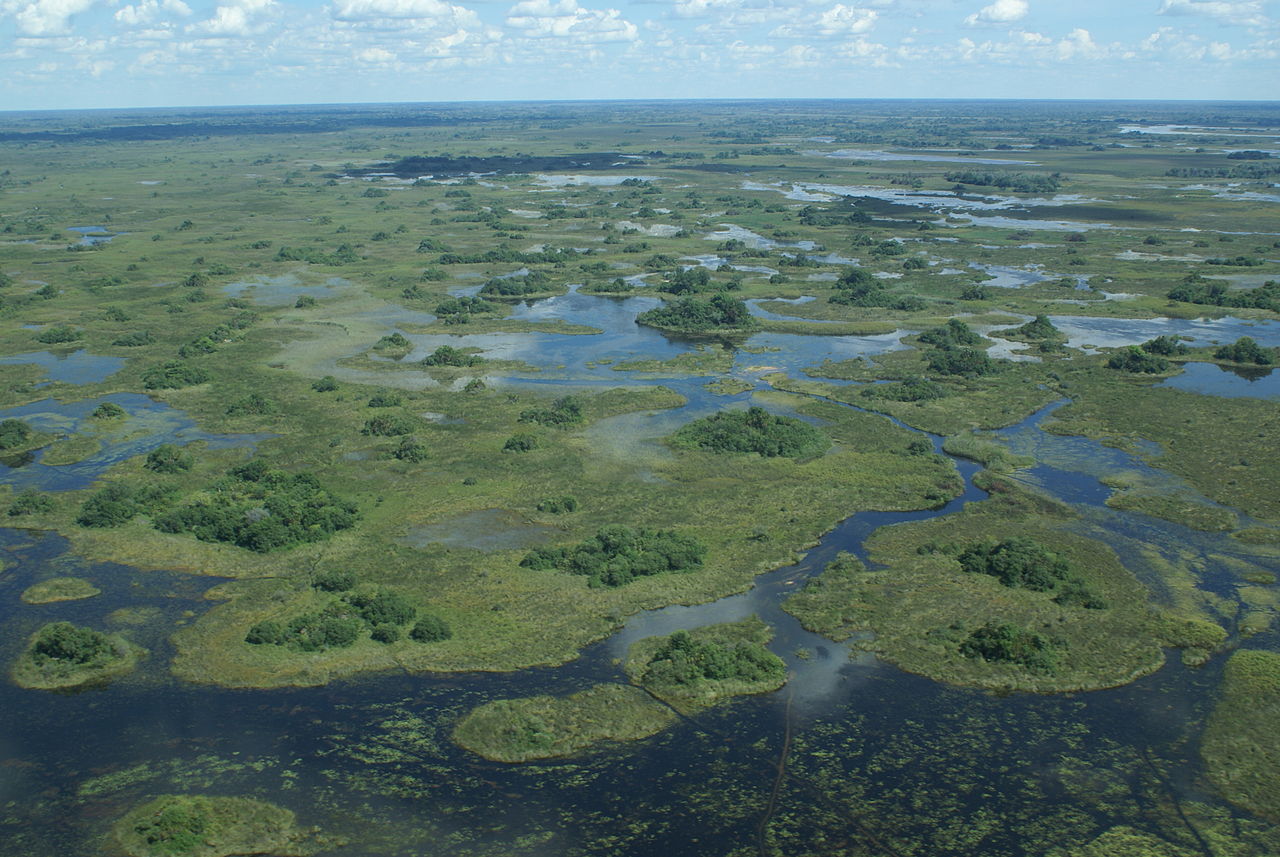Botswana March 21, 2020 Africa , AIDS , Bechuanaland , Botswana , British colony , colony , desert , désert du Kalahari , Gaborone , health , Kalahari , landlocked country , Okavango , Okavango Delta , poverty , prévalence VIH , Southern Africa , tourism , VIH Official name Republic of Botswana Name in local language Lefatshe la Botswana (tn) Continent Africa Subcontinent Southern Africa Population (ranking: 149e ) 2,325,082 inhabitants (2018) Population growth 1.78 % / year Area 581,726 km² Density 4.00 inhabitants / km² GDP (ranking: 122e )18.616 billions $USD (2018) GDP/capita (ranking ) 8,259 $USD (2018) GDP growth 4.50 % / year (2018) Life expectancy (ranking ) 69.30 years (2018) Birth rate 24.80 ‰ (2016) Fertility rate 2.69 children / woman (2016) Death rate (ranking ) 5.67 ‰ (2014) Infant mortality rate (ranking ) 20.80 ‰ (2014) Literacy rate 88.46 % (2015) Official languages Tswana, English Currency Botswana pula (BWP) HDI (ranking: 130e )0.728 / 1 (2018) EPI (ranking )51.70 (2018) Government Unitary parliamentary republic Head of State President Mokgweetsi Masisi National Day 30 September (independence of 1966) ISO Codes BW, BWA Demonym Batswana (plural), Motswana (singular) Tourists (ranking ) 1,660,202 people (2015)
Botswana is a southern African country with no access to the sea , surrounded by South Africa to the south and south-east, Namibia to the west, Zambia to the north and Zimbabwe to the northeast.
Delta of Okavango. Photo: Justin Hall Urban areas (2017) Urban areas Population Gaborone 469,020 inhabitants Francistown 167,639 inhabitants
Administrative divisions Districts Population Area Central 638,604 inhabitants 147,730 km² Ghanzi 38,710 inhabitants 117,910 km² Kgalagadi 49,415 inhabitants 106,940 km² Kgatleng 85,105 inhabitants 7,960 km² Kweneng 282,515 inhabitants 35,890 km² Nord-Est 160,928 inhabitants 5,120 km² Nord-Ouest 169,831 inhabitants 129,930 km² Sud 203,482 inhabitants 28,470 km² Sud-Est 364,377 inhabitants 1,780 km²
See also 


